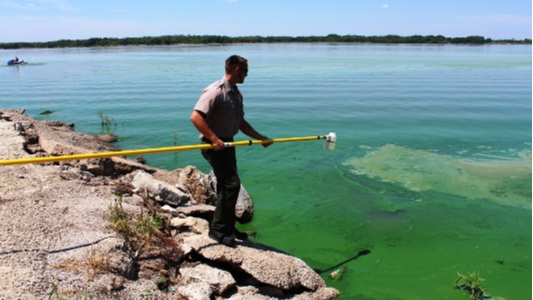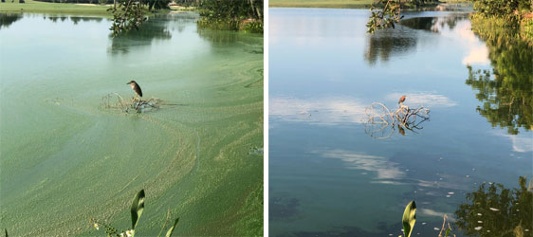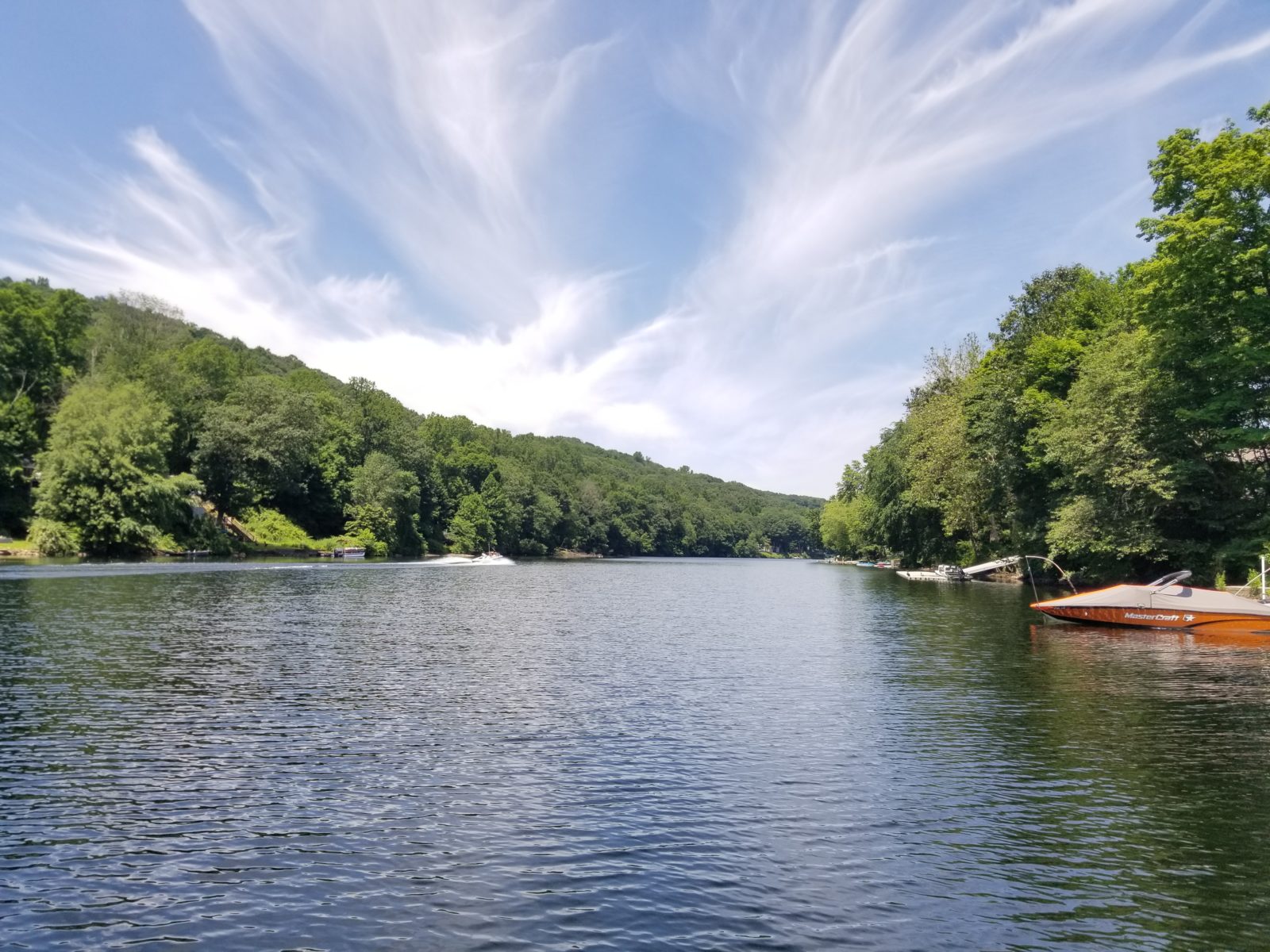Harmful Algal Blooms May Cause Summer Lake Closures
August 8th, 2019

Sometimes you get sick. Did you know your lake can too? You may stumble upon a “closed” sign at your favorite spot on the water and wonder why is my lake closed? Just as you can get sick if you fail to properly take care of yourself, it’s also possible for your lake or pond’s health to suffer without proper management, requiring swimming, fishing and other recreation to be put on hold while water quality is restored.
One of the most common reasons your waterbody may be closed is the presence of certain algal species. While many forms of algae are harmless, certain species known as cyanobacteria (often referred to as blue-green algae) may develop. If left unmanaged, these harmful algal blooms (HABs) can become so severe that they produce toxins that are harmful to wildlife, livestock, pets and public health. Suitable conditions that encourage these HABs include: warm water temperatures, increased pH levels, stagnant water, an abundance of light exposure and excessive nutrient levels. Environmental scientists are still learning about the specific effects of toxin exposure, but evidence suggests harmful algal bloom toxins may lead to the development of neurological, physiological and respiratory problems—and, in extreme cases, even death.
To better protect your waterbody and community from the negative impacts of harmful algal blooms, it is crucial to implement a continuous water quality monitoring program in your waterbody. As a vital part of any management plan, proactive management is key to identifying problems within your lake as well as being able to react in a timely manner. Thorough water quality testing will allow your lake management professional to verify the state of your waterbody and design a management plan that promotes balance and reduces the chance of a harmful algal bloom from occurring.

Before and 72 Hours After Nanobubble Aeration Treatment
One of the leading technological advances in the lake management industry today is nanobubble aeration, which may reduce the chances of your lake falling victim to HABs. EPA-registered nanobubble aeration systems are designed eliminate algae and naturally destroy excess nutrients and pollutants in the water column. Another benefit of the nanobubble aeration system is that the water becomes saturated with up to 79,000 times more oxygen verses traditional aeration systems. Rather than rising out of the water like bubbles created by floating fountains or submersed diffusers, nanobubbles stay dormant in the water column from two to three months, all the while preventing the accumulation of muck or sediment at the bottom of your lake. Utilizing nanobubble aeration can help reduce the chances of HABs and, thus, toxin development.
While nanobubble aeration is a transformative, cutting-edge technology, it is not the only tool that can be used to prevent HABs. Aeration should always be implemented in conjunction with other proactive management strategies to achieve true ecological balance. Buffer management and shoreline restoration strategies can help reduce erosion and sedimentation while providing lasting habitat for native wildlife. Biochar, a natural carbon-based product, can be used to capture excess nutrients and physically remove them from the water column before they can fuel nuisance weeds or algae. Biological bacteria can also be applied to help facilitate the metabolization of muck and sludge at the bottom of the waterbody to improve water quality and increase lake depth and volume.
You can’t always control when you get sick—lakes can’t either—but you can take steps to boost your immune system through the use of healthy food, vitamins, exercise and more. So why not be proactive and help ensure your lake stays healthy and beautiful? Whether you’re looking to manage your waterbody for stormwater runoff, drinking water, aesthetic enhancement or recreational purposes, your lake management specialist can perform assessments that help you make the best decisions for the long-term care of your lake or pond.
Contact the experts at 888-480-5253 for all of your lake, stormwater pond, wetland and fisheries management needs.
SOLitude Lake Management is a nationwide environmental firm committed to providing sustainable solutions that improve water quality, enhance beauty, preserve natural resources and reduce our environmental footprint. SOLitude’s team of aquatic resource management professionals specializes in the development and execution of customized lake, stormwater pond, wetland and fisheries management programs that include water quality testing and restoration, nutrient remediation, algae and aquatic weed control, installation and maintenance of fountains and aeration systems, bathymetry, shoreline erosion restoration, mechanical harvesting and hydro-raking, lake vegetation studies, biological assessments, habitat evaluations, and invasive species management. Services and educational resources are available to clients nationwide, including homeowners associations, multi-family and apartment communities, golf courses, commercial developments, ranches, private landowners, reservoirs, recreational and public lakes, municipalities, drinking water authorities, parks, and state and federal agencies. SOLitude Lake Management is a proud member of the Rentokil Steritech family of companies in North America.










